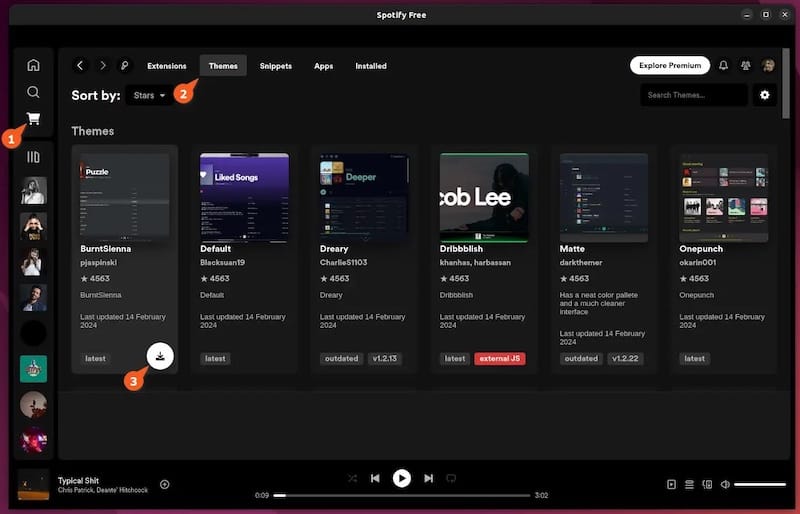How To Install Spicetify on Debian 12

Spotify is one of the most popular music streaming platforms, offering a vast library of songs and podcasts. While the default Spotify client is functional, it lacks customization options. This is where Spicetify comes in. Spicetify is a powerful tool that allows you to customize your Spotify client with themes, extensions, and custom apps, giving you a personalized and enhanced music listening experience. In this article, we will guide you through the process of installing Spicetify on Debian 12, providing step-by-step instructions and troubleshooting tips.
Prerequisites
Before we begin the installation process, ensure that your system meets the following requirements:
- Debian 12 operating system
- Internet connection
- Terminal access with sudo privileges
Additionally, having basic command-line interface (CLI) knowledge will be helpful throughout the installation process.
Step 1: Preparing the System
To ensure a smooth installation, it’s essential to update your system packages to the latest versions. Open your terminal and run the following command:
sudo apt update && sudo apt upgradeIf you have any existing Spotify Snap installations, remove them using the command:
sudo snap remove spotifyStep 2: Installing Spotify Client
To install Spicetify, you first need to have the Spotify client installed on your Debian 12 system. Follow these steps to add Spotify’s official repository and install the client:
- Add Spotify’s GPG key to your system’s trusted keys:
curl -sS https://download.spotify.com/debian/pubkey_6224F9941A8AA6D1.gpg | sudo gpg --dearmor --yes -o /etc/apt/trusted.gpg.d/spotify.gpg- Add the Spotify repository to your system’s sources list:
echo "deb http://repository.spotify.com stable non-free" | sudo tee /etc/apt/sources.list.d/spotify.list- Update the package list and install the Spotify client:
sudo apt update && sudo apt install spotify-clientStep 3: Installing Spicetify CLI
With the Spotify client installed, you can now proceed to install the Spicetify CLI. The easiest way to install Spicetify is by using the official installation script. Run the following command in your terminal:
curl -fsSL https://raw.githubusercontent.com/spicetify/spicetify-cli/master/install.sh | shThe script will download and install Spicetify along with its dependencies. Once the installation is complete, you can verify the installation by running spicetify --version in your terminal.
Step 4: Configuring Spotify Permissions
For Spicetify to function correctly, it needs the necessary permissions to modify Spotify files. Grant these permissions by running the following commands:
sudo chmod a+wr /usr/share/spotify
sudo chmod a+wr /usr/share/spotify/Apps -RThese commands allow Spicetify to read and write to the Spotify directories, enabling customization.
Step 5: Applying Spicetify
Before applying Spicetify, it’s recommended to create a backup of your current Spotify configuration. Run the following command:
spicetify backupThis command creates a backup of your current Spotify settings, allowing you to revert changes if needed.
To apply the default Spicetify theme and settings, use the command:
spicetify applySpicetify will now modify your Spotify client with the default customizations. If you encounter any issues during this process, refer to the troubleshooting section below.

Step 6: Customizing Spotify with Spicetify
Spicetify offers a wide range of customization options, including themes, extensions, and custom apps. To explore available themes, visit the Spicetify Themes repository on GitHub.
To install a new theme, follow these steps:
- Download the theme files and place them in the Spicetify themes directory (e.g.,
~/.config/spicetify/Themes). - Open the Spicetify configuration file (
config-xpui.ini) located in~/.config/spicetify/and set thecurrent_themevariable to the name of the theme you want to use. - Apply the changes by running:
spicetify applySpicetify also supports extensions, which add additional functionality to your Spotify client. To install an extension, place the extension files in the Spicetify extensions directory (e.g., ~/.config/spicetify/Extensions) and enable it in the configuration file.
For more customization options, check out the Spicetify Marketplace, which offers a collection of themes, extensions, and custom apps contributed by the community.
Troubleshooting and Common Issues
If you encounter any issues during the installation or customization process, here are some common solutions:
- “Command not found” error: If you receive a “command not found” error when running Spicetify commands, ensure that the Spicetify directory is added to your system’s PATH variable. You can add it by editing your shell configuration file (e.g.,
~/.bashrcor~/.zshrc) and adding the following line:
export PATH=$PATH:$HOME/.spicetify- Spotify not loading after applying Spicetify: If Spotify fails to load after applying Spicetify, try running
spicetify restoreto revert to the original Spotify configuration. Then, reapply Spicetify usingspicetify apply. - Theme not applying correctly: Ensure that the theme files are placed in the correct directory and that the theme name is correctly specified in the Spicetify configuration file. Double-check the file paths and theme name for any typos.
Congratulations! You have successfully installed Spicetify. Thanks for using this tutorial to install the latest version of the Spicetify on Debian 12 Bookworm. For additional help or useful information, we recommend you check the official Spicetify website.